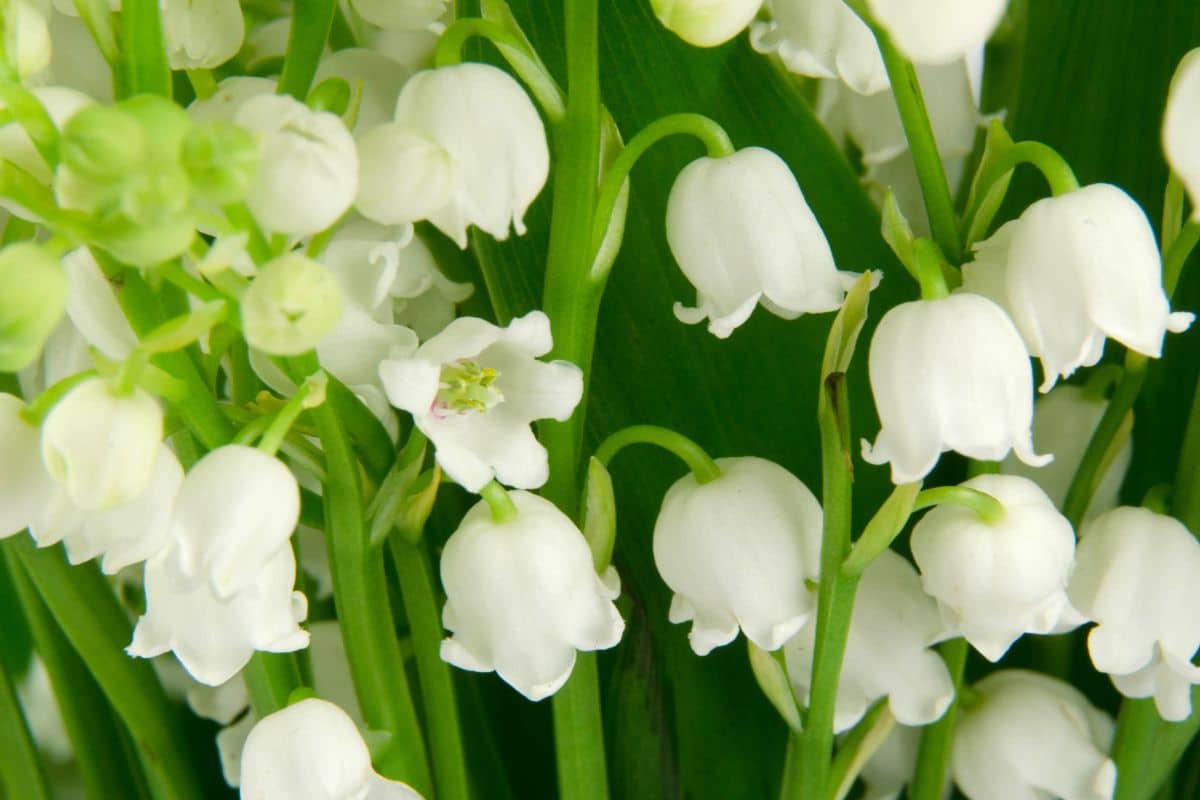Lily of the valley may appear innocent with its delicate white bells and sweet fragrance, but this invasive plant can quickly take over your garden. While beautiful in controlled settings, its aggressive rhizome system makes it a nightmare for many gardeners. If you’re struggling with an unwanted lily of the valley invasion, there are several effective methods to reclaim your garden space.
Understanding lily of the valley growth patterns
Before tackling any removal project, it’s essential to understand what makes lily of the valley (Convallaria majalis) so persistent. This woodland perennial spreads primarily through underground rhizomes that grow horizontally just beneath the soil surface. These rhizomes can extend several feet in a single growing season, creating a dense network that’s difficult to eliminate.
The plant’s growing cycle typically begins in early spring, with flowering occurring in May and June. By late summer, the rhizomes are actively spreading, preparing for the next season’s growth. Understanding this cycle helps determine the most effective timing for removal efforts.
Lily of the valley thrives in partial to full shade and prefers moist, humus-rich soil. These conditions often exist in woodland gardens where other plants might struggle. However, these same qualities make it particularly invasive in cultivated garden spaces.
One important note: all parts of lily of the valley are toxic if ingested, containing cardiac glycosides that can cause serious health issues. When removing this plant, always wear gloves to protect your skin and wash your hands thoroughly afterward. If you have pets or small children, this toxicity is another good reason to consider removal, especially if they spend time in your garden space.
Many gardeners find themselves dealing with lily of the valley after inheriting it from previous homeowners. What started as a charming corner plant can quickly become an overwhelming problem, similar to how black spots can unexpectedly appear on camellia leaves and create garden management challenges.
Manual removal techniques
For smaller infestations, manual removal can be an effective first approach. The key is thoroughness and persistence, as leaving even small rhizome fragments can result in regrowth. Here’s a step-by-step process for manual removal:
- Water the area thoroughly a day before digging to soften the soil
- Use a garden fork rather than a spade to minimize cutting through rhizomes
- Start at the edges of the patch and work inward
- Dig at least 8-10 inches deep to capture all rhizomes
- Sift through the soil carefully to remove all plant material
- Dispose of removed plants in the trash, not compost
This method works best in spring when the plants are visible above ground but haven’t yet set seed. The visual identification of all plant parts is crucial for complete removal. Expect to repeat this process several times over multiple growing seasons for complete eradication.
A variation on manual removal involves smothering the plants after initial digging. After removing as many rhizomes as possible, cover the area with cardboard or several layers of newspaper, then add a 3-4 inch layer of mulch on top. This smothering technique blocks sunlight and eventually exhausts any remaining rhizomes.
For particularly stubborn areas, consider using a root barrier. Installed vertically around the perimeter of wanted lily of the valley (if you’re containing rather than eliminating), a barrier of at least 12 inches deep can prevent rhizomes from spreading beyond the designated area.
Chemical control options
When manual methods aren’t feasible due to the size of the infestation or other limitations, chemical herbicides may be necessary. While many gardeners prefer to avoid chemicals, they can be effective when used properly and responsibly.
Systemic herbicides containing glyphosate are generally most effective against lily of the valley. These work by being absorbed through the foliage and transported throughout the plant, including the rhizomes. For best results:
- Apply on a calm, dry day when no rain is forecast for at least 24 hours
- Cut back tall foliage first, wait for regrowth, then apply
- Use a targeted application method like a paintbrush or spot sprayer
- Protect surrounding plants with cardboard shields during application
- Follow all safety precautions on the product label
It’s important to note that chemical control will likely require multiple applications over several growing seasons. The waxy coating on lily of the valley leaves can make herbicide absorption challenging, so adding a surfactant to the mixture may improve effectiveness.
If you’re concerned about using synthetic chemicals, horticultural vinegar (20% acetic acid) can provide some control, though it’s generally less effective than glyphosate and requires more frequent application. This option works best on young plants rather than established patches.
Replacement planting strategies
Once you’ve successfully eliminated lily of the valley, it’s important to replant the area quickly to prevent soil erosion and discourage new invasions. Choosing appropriate replacement plants can help ensure your garden remains beautiful and manageable.
Consider native woodland species that can thrive in similar conditions but won’t become invasive. Some excellent options include:
Wild ginger (Asarum canadense) – This native groundcover offers heart-shaped leaves and spreads gently in woodland settings. Unlike lily of the valley, it remains controllable and provides excellent erosion control on slopes.
Foamflower (Tiarella cordifolia) – With delicate white flower spikes in spring and attractive foliage year-round, foamflower makes an excellent replacement in partially shaded areas. It spreads slowly and remains well-behaved in garden settings.
If you’re planning your garden renovation for the coming seasons, consider incorporating some flowers to plant before September for a vibrant fall garden to ensure year-round interest after removing the lily of the valley.
After replanting, maintain vigilance for any lily of the valley regrowth. Promptly remove any returning plants before they can re-establish. With persistence and the right approach, you can successfully eliminate lily of the valley and reclaim your garden space for more desirable plants.

